
views
Making General Emergency Preparations
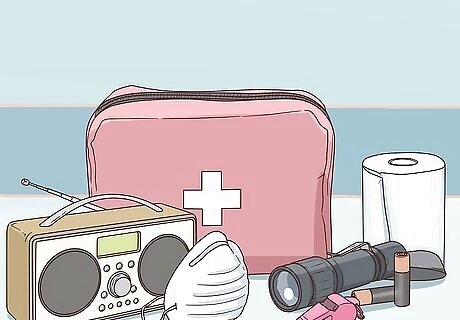
Create an emergency supply kit. If the storm is likely to cause a lot of damage, it's important to be prepared for a variety of problems. Things that you should put in a basic supply kit include: Flashlights and extra batteries. Emergency radio. First aid kit. Whistle, to alert people to your location. Personal sanitation products, such as garbage bags, toilet paper, paper towels, wet wipes, and tampons/pads. Plastic tarps Extra warm clothes. Dusk masks. Utility shut off tools.

Make a severe weather plan. Having a plan that your family understands can help all of the people in your family know what to do when a storm hits. Make sure to plan out: Where to take shelter in your home. What phone number to call in case of emergency. How you will get out of your home in an emergency. Where family members will meet if a storm hits while you are not all at home.
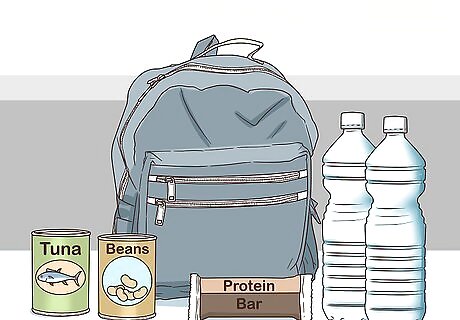
Store an emergency supply of food and water. You should have enough water so each family member can have one gallon of water per day for 3 days. You should have enough food to feed your whole family for 3 days as well. This food and water should be put in a location where you can reach it during a disaster, such as in the spot where you will take shelter during a storm. Canned food that is ready to eat, such as tuna, beans, or fruit, is a good choice for your emergency food supply. You can also put protein bars, dried fruit, dried cereal, and non-perishable pasteurized milk in your stash.
Preparing for a Storm with Strong Winds

Secure items that are likely to blow away. Tie down or put items inside that are likely to fly away in high winds. This can include a variety of items, including garbage cans, lawn furniture, and other lightweight items that are typically outdoors. However, if you only have a small amount of time before the storm starts, focus only on important items that you would be sad to lose. It is especially important to put items away because they could become projectiles if the wind gets really strong.

Cover windows and batten down your shutters. If you know there will potentially be a lot of wind, such as in a hurricane, it's important to prevent shutters from blowing off and windows from being broken. You can prepare your shutter by tightening loose bolts or screwing them shut. Windows can be covered by plywood that is at least ⁄8 inch (1.6 cm) thick. Windows are typically covered if there is a hurricane warning, not for a less severe storm.

Don't park under or near a big tree. If the weather gets severe enough, the wind could blow a limb or the tree down on your car. Instead, pick a spot where your car will not be hit by falling debris. If you have a garage, it's a good idea to put your car in it before the storm hits.
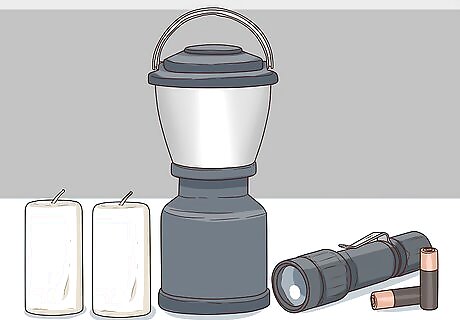
Prepare for a power outage. Storms with strong winds often knock out power for long periods of time. Before the storm hits, make sure you have plenty of flashlights, candles, and lanterns. Also take the time to charge up your devices, such as your cell phone, as you may not be able to charge them again for several days. If you have a generator, make sure it is in good working order before the storm hits.

Plan to stay indoors. Severe storms are often accompanied by strong lightning and dangerous winds. If you are outdoors, seek shelter immediately. Stay away from trees and out of water. If you are in your home, stay there. If you are not at home, try to find an open business (hotel, fast food restaurant, etc.) to stay in until the storm passes. Don't try to travel a long distance to get to your home when a storm is about to hit.
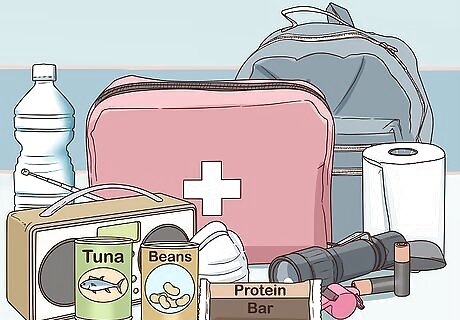
Check your emergency kit and food and water supply. Make sure that the food you have for emergencies is not expired. Also make sure batteries in flashlights work and that everything you have stored for an emergency is in general working order. If your emergency supplies are not located in an area that you can reach during a storm, move them before the storm hits.
Planning for Tornadoes
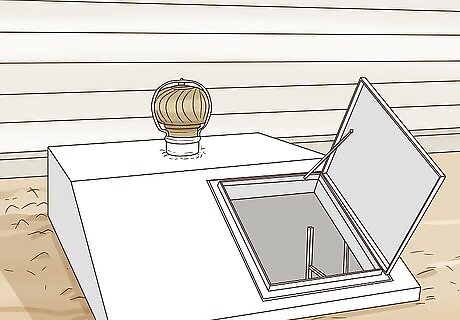
Determine where you should take shelter from a tornado. When preparing for a tornado, you need to establish a place to take shelter in that can withstand high winds and the damage a tornado is likely to do. Places like your basement or a windowless room (like a closet) are typically the safest places to go. The key is find the best location that you have. While you may not have a basement, determine where you will be safest during a tornado.
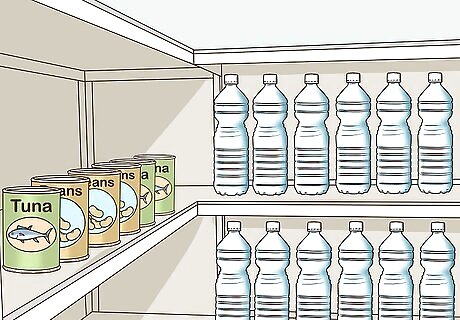
Put your emergency supplies in your sheltered area. If you do not have your emergency kit and your emergency supply of food and water in the area you will ride out the storm in, move them there. It is important to have them with you if you need to stay sheltered for quite awhile. As you move your emergency supplies, make sure your first aid kit is stocked, that your food is not expired, and that all flashlights and electronics are in working order.

Evacuate if told to do so. In some cases there will be some warning that a tornado is coming and you will be advised to leave the area. While it may be tempting to stay in your home, you need to be prepared to leave if you are told to by authorities. If told to evacuate, take only your essentials with you and follow the directions given by local authorities.

Turn on your emergency radio. Once you are safely sheltered, an emergency radio can provide you with key information. It will help you know what the strength of the tornado is, what its path is, and when it has left your area.
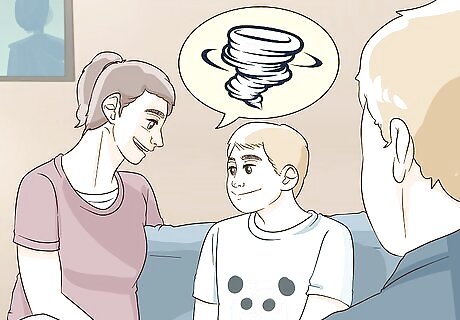
Teach your whole family how to deal with a tornado. For instance, a tornado can make several passes over one area and can be very calm at its center. Because of this, it's important to let your family know that it's dangerous to come out of your shelter when the winds die down and noise levels drop. Instead, make sure that you are listening to your emergency radio and that you only come out of your shelter if told to do so by local authorities.
Getting Ready for Flooding
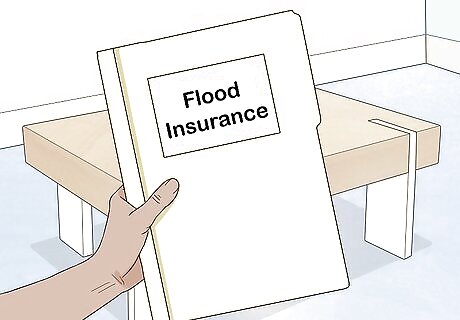
Get flood insurance if you live in an area that floods. This is very important for homeowners and renters alike, as floods can destroy most of your belongings. Remember that it can take about a month for flood insurance to kick in, so get it now and keep it up to date so that it is in effect if flooding occurs. Flood insurance is not typically included in your basic home owners policy. It is an added protection that you need to ask for from your insurance agent.
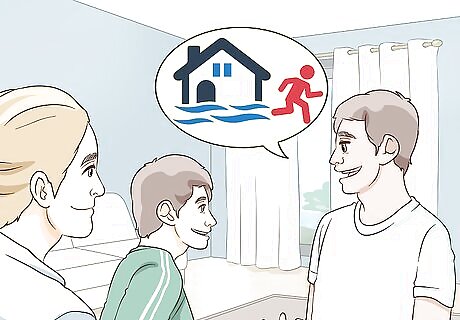
Have a family evacuation plan. If you live in an area that is prone to flooding, you should map out the highest elevation route of how you can get out of your neighborhood to higher ground and share that info with your family. Knowing this ahead of time will make evacuation easier. Telling all family members about the plan will help ensure that all of the members of your family can get to safety, even if you are not with them.

Move important items to high locations in your home, if possible. If you know that flooding is about to occur or if you live in an area that is prone to flooding, it's best to keep valuables at high elevations in your home. This gives them the best chance of avoiding water damage during a flood. If flooding is going to occur and you can't move items to a higher elevation in your home, you can still prop them up off the ground. Use concrete blocks, boards, or anything else you have to raise up things you cherish.
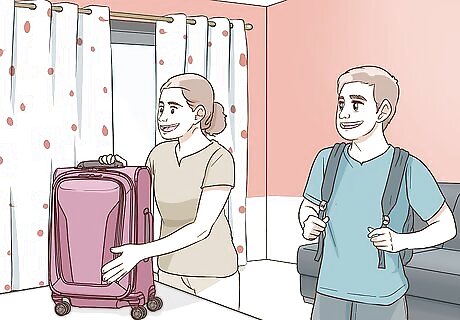
Evacuate if told to do so. If severe and life-threatening flooding is expected to occur in your area, local officials may call for evacuation. It is important that you follow evacuation directions, as your life and the life of your family could be threatened if you stay in your home. Even if local officials don't order you to evacuate but only suggest that it's a good idea, you should follow their advise. This will help ensure that you and your family remain safe and sound.

Don't drive in a flood. Driving in a flood is extremely dangerous because moving flood waters can sweep your car away with you in it. If you are driving when a flood hits, park the car in the highest area you can and don't wade out into the flood waters. If you're out driving when a flood starts occurs, try to avoid major areas of standing water or driving near bodies of water, such as an underpass or a flat road.
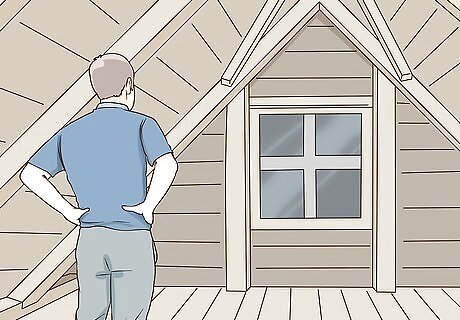
Move yourself and your family to high ground. If a flood has occurred unexpectedly, it's important to try to get to an area that is high without walking, swimming, or driving through flood waters. In many cases this will simply entail moving to the upstairs of your home. However, do not go into an enclosed attic that has no windows. This could cause you to become trapped by rising water.
Preparing for Snow and Ice
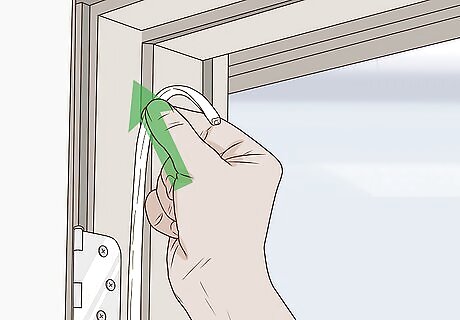
Have your home insulated and prepared for cold temperatures. If you live in an area that is prone to ice and snow, have the home insulted, caulk gaps and cold air sources, and apply weather stripping around doors and windows. You should also learn about how to keep your pipes from freezing, which can include installing anti-freeze tape on pipes that have contact with the outside. This preparation also includes making sure your furnace is in good working order.
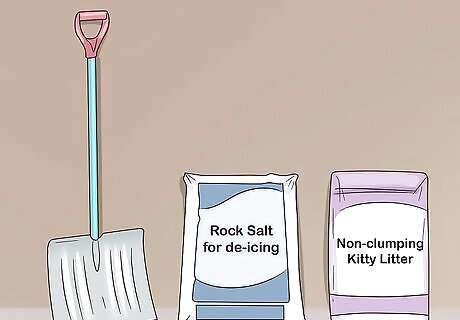
Buy supplies that can be helpful when dealing with ice and snow. There are a variety of items that you may not have in your home but that can be helpful if a storm is bringing ice and snow. This can include: Salt or snow melt. Non-clumping kitty litter or sand for traction. Traction devices for shoes. A snow shovel.
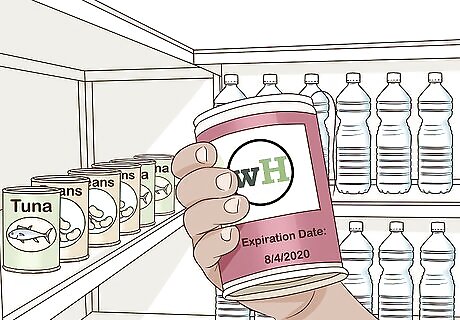
Make sure your emergency supplies are up to date. If you know a storm is coming it is very important to make sure you have an up-to-date emergency supply kit that includes first aid supplies and flashlights, in case you lose power. You should also make sure that your emergency stash of food and water is still intact. Make sure the food is not expired. It is also a good idea to check your supplies annually, so that you always know that you are ready for an emergency.
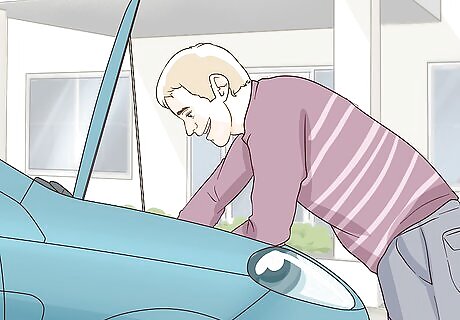
Get your car tuned up. Call your mechanic and set up an appointment to get your car assessed before the storm is expected. Having your car inspected and repaired by a mechanic before a winter storm can help you avoid getting stuck in a snow storm, as cold temperatures can prevent your car from starting. In particular, make sure your radiator is filled with antifreeze, your battery and starter are working well, and that your tires have a good tread on them.


















Comments
0 comment